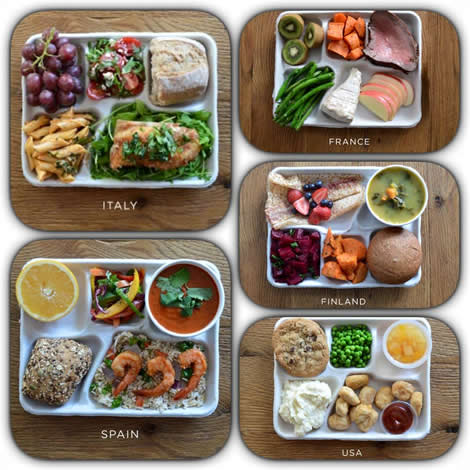A New Take on School Lunch Nutrition – Boost Your Child’s Brain Power!
Anyone who has spent time in a school lunchroom in the United States can attest to the fact that most lunchrooms are places where the attitude is hurry up and eat, and due to increasing budgetary and space constraints, many districts are still serving up institutional and low nutritional lunches. The average lunchtime is 20 minutes long, as opposed to Italy, France, Finland and Spain.
On top of this, too many busy parents who do send a lunch with Johnny or Jane choose convenience over good nutrition (a choice that is often reflected in their own approach to lunch). What’s being missed by parents and school is the role that fresh, unprocessed food eaten in a relaxing environment can play for all children, but especially for those who struggle with learning challenges.
But hopefully, we’re beginning to see the start of a new movement. Supportive, tenacious parents and teachers, tutors, caregivers and mentors who encourage and who have a genuine interest in the child are crucial to the child’s ultimate success, are beginning to advocate for a different kind of school lunch environment, as well as for healthier nutritional choices.
As we head off into a new school year, the following is a simple list of suggestions that will allow your child to not only survive school, but be supported nutritionally for a year of success.
- Water, which constitutes 45-75% of body weight, and up to 90% of brain weight, is critical for nerve conduction and so improves memory. Choose water over juice as the lunch beverage of choice.
- Nutrients that support brain energy are Coenzyme Q10, N-acetyl carnitine, N-acetyl cysteine, Lipoic acid, Glutathione, Vitamin C, Thiamin, Vitamin E, Riboflavin, Magnesium, Essential fatty acids.
- Remember that starting your child’s day with sugar and carbohydrates for breakfast – what is found in most boxed cereals and other already prepared breakfast foods – can increase his or her blood adrenalin 10 times which produces symptoms of anxiety, irritability, poor concentration, hyperactivity and a malnourished brain.
- Your child’s diet throughout the entire day should follow this simple program:
- Low in sugar or less than 10% of total calories
- Limit refined/processed foods, as well as foods containing additives and preservatives
- High in fresh fruit, vegetables, protein, high fiber (30-50 grams)
- Balanced in healthy fats < 15 to 30% of calories, like those found in avocados, olive oil, and fish.
- Foods rich in vitamin B, such as whole grains – Vitamin B complex deficiencies have been shown to contribute to hyperactivity, aggression, mood, and decreased glucose metabolism which affects ability to think
- Essential minerals such as calcium, magnesium, iron and zinc– deficiencies in these have been linked to hyperactivity, fidgeting, psychomotor instability, learning difficulties, mood and decreased IQ test performance.
- Essential fatty acids and amino acids – the brain is 60% fat, so deficiencies, especially in developing brains, can negatively affect mood, behavior, learning, memory, movement, central nervous system disorders, dyspraxia and decreased number of brain cells.
- Most schools understand that small meals throughout the day will assist with a more even energy level. Make sure to pack a healthy snack that will assist your child with the mental and physical needs they need all day long.
Children are under a high level of academic, social, and physical pressure in school. Their days demand a higher mental function which requires two to three times more energy than basic brain function. If they are lacking in nourishment, their ability to learn can suffer, not to mention not having the balanced energy level for the average six to seven hour school day.
As more and more school districts are shifting their approach to school nutrition, and tapping into the nearby resources of local farms and markets, the benefits are being experienced in an environment that is ripe for learning. Do your part and pack a lunch that supports your child’s success in school. Better yet, become an advocate for your school to up their nutritional learning support with positive messages about healthy eating and active living – both will go a very long way toward a successful school year.

